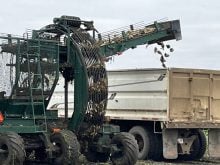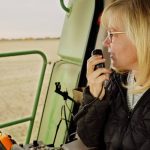Q: I own several snowmobiles and my entire family enjoys this activity, but I am wondering if there are any particular laws I should be aware of?
A: With the first snow on the ground for many of us, thoughts turn to this activity. I’m always reminded of one of my daughter’s teachers who moved to Saskatchewan from the Maritimes one fall, and immediately bought the biggest sled he could. We had no snow until February that year.
Most provinces have clubs or associations that are knowledgeable and will help train new riders about the laws that apply, as well as safety considerations and the etiquette that goes along with proper snowmobile riding. Most offer courses that first-time drivers should take. Check the internet or phone book for resources in your area.
Read Also

Accurate accounting, inventory records are important
Maintaining detailed accounting and inventory records is not just a best practice; it’s a critical component of financial health, operational efficiency and compliance with programs like AgriStability.
Safety first. Each province or municipality will have a speed limit. For example, in Saskatchewan the speed limit on groomed trails is 80 km-h, but that is in optimum conditions. Lack of visibility or poor snow conditions suggest that you should slow down.
As well, most provinces have a law about whether helmets are mandatory. Often, for younger riders, they are a requirement no matter how experienced. Younger operators usually have to take a safety course and there are age limits for obtaining a licence. In Alberta, you must be 14 before you can operate a snowmobile independently.
Drinking and driving don’t mix, and this applies to snowmobiles. You can end up with the same charges by driving a snowmobile while impaired as when driving a car or truck.
Civil liability can also be incurred if you cause an accident while under the influence.
Most provinces require snowmobiles to be registered and make it illegal to operate one without a valid licence plate and an operator’s licence. There are sometimes exceptions for the far north if someone hunts for a living or is involved in guiding or outfitting. Check local laws to make sure.
You will also need to obtain proper insurance. If you do get into an accident, you must report it to the police, just as if you were operating a car.
Most cities prohibit the use of snowmobiles within city limits. You cannot drive one on or across a highway, except in limited circumstances.
When on a roadway, vehicles and pedestrians have the right of way; snowmobiles are low on the list of priority.
Landowners have the ability to prohibit snowmobile riding on their property. Watch for signs and be courteous. Even if property is not posted, it’s a good idea to ask for permission before ripping across someone’s field.
Some provinces monitor the actual machines. For example, in Saskatchewan you cannot modify your sled’s exhaust system if it results in the machine being too loud. This can result in a ticket and fine, as well as a requirement to change your machine back to the way it was. In Alberta, you cannot modify the exhaust at all.
Finally, remember that you take on a lot of liability the moment you jump on a snowmobile. If you are not on a groomed trail and cause damage to land, you are likely liable.
Also, if you are participating in a race or rally, it is unlikely that the sponsor has any liability. There are cases saying the sponsors have no duty of care to individual operators, and if you are hurt or killed, you may have no recourse.
This is a fun sport for many ages, but only if it is taken seriously and participants act responsibly.
Rick Danyliuk is a practising lawyer in Saskatoon with McDougall Gauley LLP. He also has experience in teaching and writing about legal issues. His columns are intended as general advice only. Individuals are encouraged to seek other opinions and/or personal counsel when dealing with legal matters.














